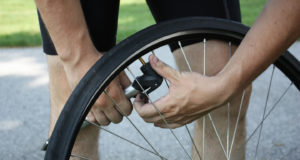When you fell into bed after an intense training session yesterday, everything was fine, but today every movement of your legs hurts and you can barely walk? You’re probably affected by muscle soreness, which is a common side effect of unusual or excessive exercise that even professional athletes aren’t exempt from. Read below how muscle soreness develops and what you can do to prevent it.
How does muscle soreness develop?
Delayed muscle pain can occur after unusual physical stress (e.g. when getting back into working out after a break from training) or excessive strain. In the past, scientists believed that the pain originated from the overproduction of lactic acid, however, today scientists know that the muscle fibrils (parts of the muscle fibres) are affected by small tears due to the unfamiliar strain. Water can enter into the tears, leading to the painful expansion of the muscle fibres. The pain, which can linger for some days, is only felt after some time as the nerves are irritated after some delay.
Is it possible to prevent muscle soreness?
It is difficult to prevent muscle soreness as even prolonged stretching and warm-ups are no guarantee for a pain-free next day. However, there are some strategies that may help prevent muscle soreness: For example, the ingestion of magnesium helps muscles to warm up faster. Furthermore, enzymes (which are contained in many fruits and vegetables) are natural agents that can help prevent aching muscles if ingested before starting your workout. The best way to prevent muscle soreness, however, is to train regularly and to increase the intensity of the training slowly and continuously in order not to overwhelm the body. This improves muscle coordination, meaning that your muscles work together better which also helps prevent muscle soreness.
What can I do to treat muscle soreness?
The good thing: Sore muscles aren’t damaged and the aching pain usually vanishes after a few days. Those who can’t cope with the pain can take pain medication, however, there isn’t a real treatment for sore muscles. Other popular remedies for the pain are a hot bath or a sauna visit as warmth is good for aching muscles – increased muscle temperature improves the blood flow through the muscle which means that more nutrients and fresh oxygen are transported to the muscle, alleviating the pain. Another option is to do some light exercise to keep the muscle moving. In the end, time heals all wounds even without useful remedies and you should be able to painlessly head into the next training session after a week at most.
Do you have more tips on dealing with sore muscles? 💪🏻
Let us know in the comments!
- The Top 5 Cycling Destinations in 2020 - January 14, 2020
- Your First Long Bike Ride – 200km and More - January 11, 2020
- 4.5M – The World’s Largest Cycling Route Collection - November 21, 2019
Author Profile
- Hannah ist begeisterte City-Bikerin und Geographiestudentin. Sie genießt es, bei der Recherche von neuen Radregionen und Themen für den Blog immer wieder etwas Neues zu lernen.








